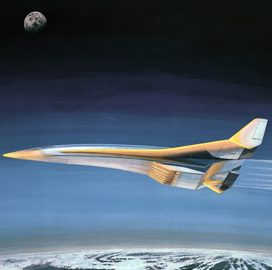
Hypersonic weapons
Second Flight Test of Hypersonic Glide Body to Take Place by Year’s End
U.S. Army and industry officials involved in the Common-Hypersonic Glide Body program have announced that a second flight test of the system is expected in the final quarter of the calendar year.
The C-HGB will serve as the base of the hypersonic missile. Each military service will develop individual systems, like launchers that will allow the weapon to be fired from land or sea.
The Army and Navy first flight-tested the hypersonic glide body in March 2020 at the Pacific Missile Range Facility in Hawaii. During the test, the glide body launched and flew at hypersonic speed and made impact within 6 inches of the target, Defense News reported.
The second test was originally scheduled for the third quarter of fiscal year 2021. But in an interview with Defense News at the Space and Missile Defense Symposium, Lockheed Martin Hypersonic Strike Programs Vice President Eric Scherff said the timeline has been replanned.
According to Scherff, the government’s decision to delay the test did not involve technical issues. However, he said he could not give additional details due to security reasons.
In 2019, Lockheed Martin was selected to be the weapon system integrator for the hypersonic glide body prototypes, which are being developed by Dynetics Technical Solutions under a $351.6 million contract.
Hypersonic weapons can achieve Mach 5 and maneuver between varying altitudes and azimuths. Such capabilities allow the weapons to operate in such a way that they are harder to detect.
The Army expects to field the ground-launched version of the Long-Range Hypersonic Weapon by the end of fiscal year 2023. The Navy wants to field its ship-launched version in 2023 as well, while a submarine-launched missile is expected to be fielded in 2024. Meanwhile, the Air Force wants its air-launched version fielded in 2022.

Category: Defense and Intelligence




